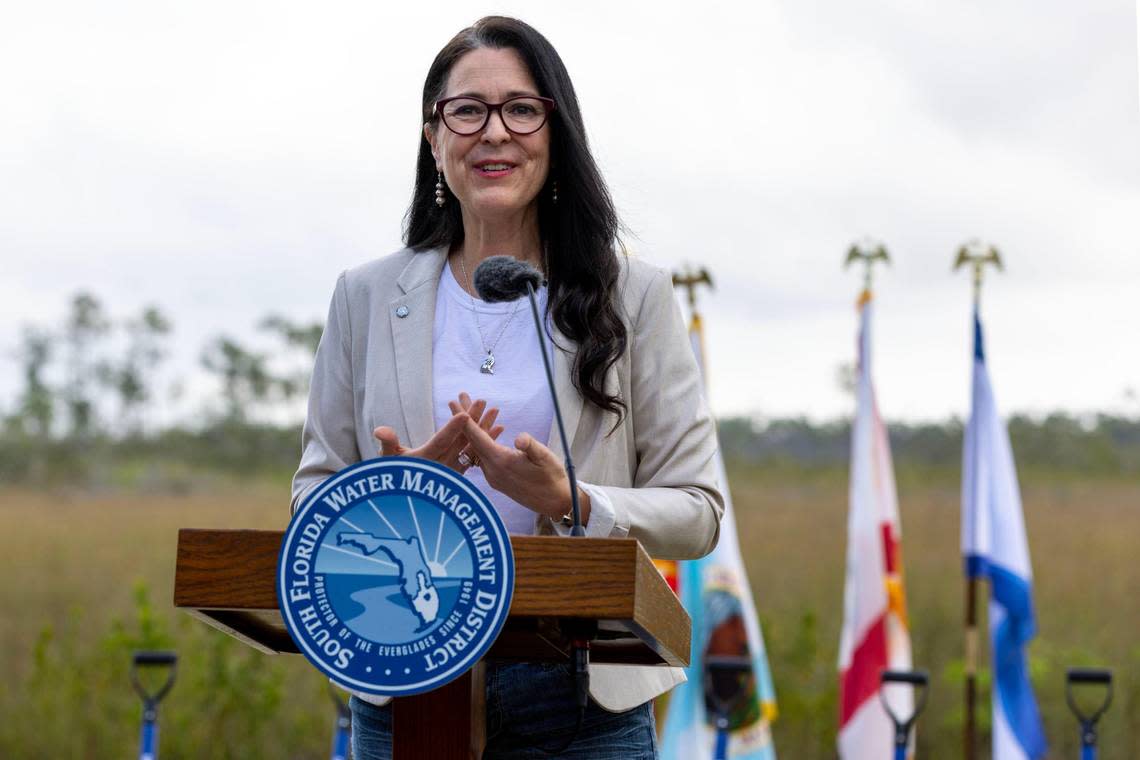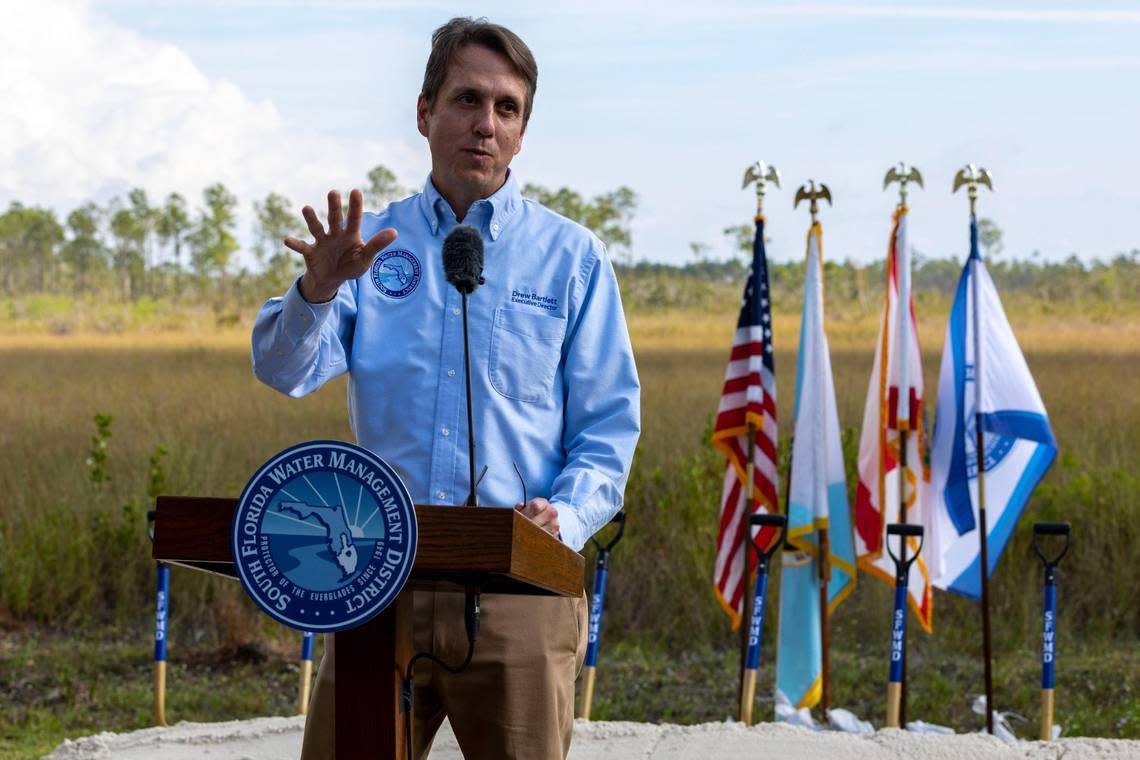The Everglades needs more fresh water moving south. This new project will help
The latest step in righting the wrongs done to the Everglades centuries ago kicked off Thursday morning with shovelfuls of ceremonial dirt flung into the air.
The South Florida Water Management District announced a new project to uncork the flow of much-needed freshwater south, into the thirsty Florida Bay, by cutting holes into a long abandoned highway winding through Everglades National Park.
“For Florida Bay, being last in line means for decades and decades and decades water was diverted,” Shannon Estenoz, assistant secretary for Fish and Wildlife and Parks for the U.S. Interior Department, told the crowd of federal, state and nonprofit Everglades restoration advocates gathered in the park. “You guys are bringing the Bay back to life, and that’s an incredible human achievement.”

When humans drained the Everglades to sell off the muck land to farmers and homesteaders, the flow of freshwater south to Florida Bay dried to a trickle, causing a string of problems that would evolve over the decades — from reducing the recharge area for South Florida’s underground drinking water supply to massive seagrass die-offs and fish kills in the bay.
Since the last critical die-off in the 1990s, the new plan for Everglades restoration involved breaking down the barriers that stopped water from flowing south — including the Tamiami Trail and a remnant road known as the Old Ingraham Highway.
“Old roads plague this park,” said Drew Bartlett, executive director of the SFWMD.

A multimillion-dollar effort to elevate the Tamiami Trail and cut holes beneath the remaining low-lying bits is almost done, Bartlett said. Once all the road is raised, the district can safely raise the water levels in the neighboring canal and push more freshwater south.
This latest project involves cutting more holes, also known as culverts, into a 3.2-mile stretch of highway deep inside the park. The Old Ingraham Highway was the original route to Flamingo, but the park closed it decades ago. Overgrown and impassable, the road now serves as a dam to block the southern flow of water through Taylor Slough and into Manatee Bay.
Removal of old Tamiami Trail roadbed opens new doors for Everglades revival
Bartlett said the project, done by district staff using its own budgeted reserves, will be done by the summer.
“It’s about having clean water in the right place at the right time,” said Cheryl Meads, a governing board member for the district.
The district also recently started a new project aimed at keeping that water inside the park boundaries, and out of homeowner’s yards. The water management district built two miles of steel walls underground, fencing off a flood-prone neighborhood on the edge of the Everglades with a controversial history.
Before Glades water flows, small community needs flood protection. This project is the hope
“If you can’t protect the community from flooding them, you have to cut off the flow,” Bartlett said.
Late last year, giant chainsaw trucks were once again at work burying even more seepage barriers. This latest project, five miles of walls in total, is projected to wrap up early next year.
More projects are on the way, as federal and state funding for restoration hit new records. The federal government’s latest budget earmarked $447 million for restoration, a new record. And earlier this month, Gov. Ron DeSantis announced a commitment to spend $3.5 billion on Everglades restoration over the next four years.
